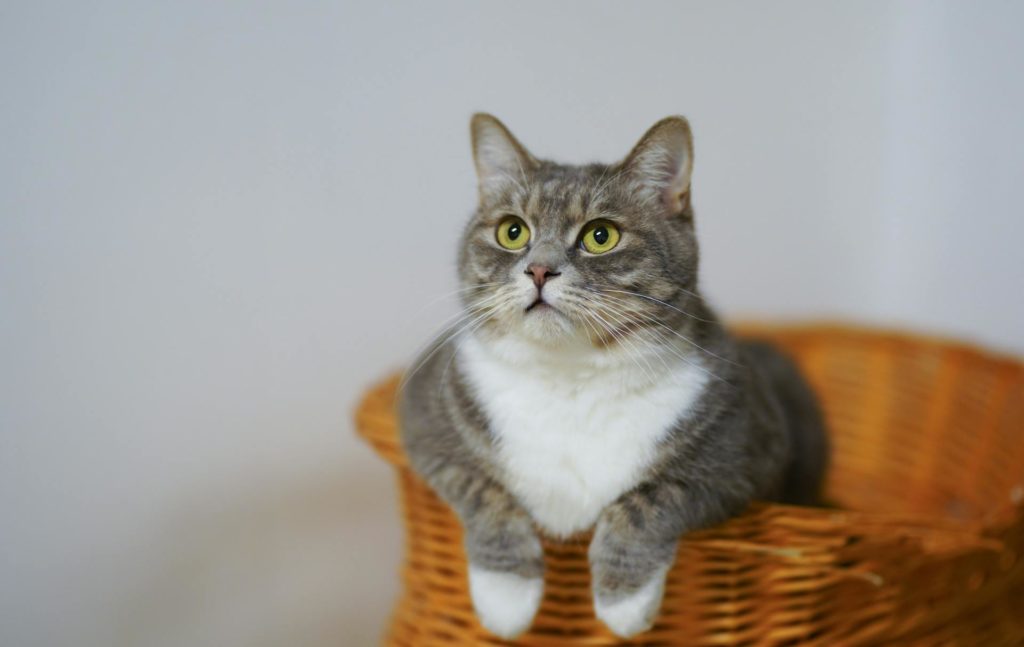Osteoarthritis (OA) is a significant concern for many cat owners, particularly as their feline companions age. Due to arthritis, this degenerative joint disease is not just a human affliction; it also affects our pets, causing chronic pain, stiffness, and reduced mobility.
As more cats live longer lives thanks to advancements in veterinary care, the prevalence of osteoarthritis in the feline population is increasing. For pet owners, recognising the early signs of OA and exploring effective treatments is crucial to maintaining their cats’ quality of life.
In recent years, Cannabidiol (CBD), a compound derived from the cannabis plant, has emerged as a potential therapeutic option for managing osteoarthritis in cats. This article investigates the causes and symptoms of osteoarthritis in cats and examines the potential benefits of CBD.
It also reviews relevant research, discusses possible side effects, and offers practical advice for pet owners considering CBD as an arthritis treatment for cats.
Understanding Osteoarthritis in Cats
Osteoarthritis is a chronic condition that leads to the deterioration of cartilage in the joints. In healthy joints, cartilage acts as a cushion between bones, allowing for smooth and pain-free movement.
In cats with osteoarthritis, this cartilage wears down over time, leading to inflammation, pain, and the formation of bone spurs. As the disease progresses, it can significantly impair a cat’s ability to move comfortably. This results in a noticeable decline in their activity levels and overall quality of life.
Causes and Risk Factors of Osteoarthritis in Cats
Several factors contribute to the development of osteoarthritis in cats. Understanding these factors can help pet owners identify cats at higher risk and take preventive measures where possible.
- Age: Age is the most significant risk factor for osteoarthritis in cats. As cats age, their joints undergo natural wear and tear, making them more susceptible to degenerative diseases like OA. While osteoarthritis can occur in younger cats, it is far more common in those over the age of 7.
- Obesity: Obesity is a major contributor to the development and progression of osteoarthritis in cats. Excess body weight increases the load on the joints, particularly those in the limbs and spine. This additional stress accelerates the breakdown of cartilage, leading to earlier onset and more severe symptoms of osteoarthritis.
- Genetics: Some cat breeds are genetically predisposed to joint issues, making them more likely to develop osteoarthritis. Breeds such as Maine Coons, Persians, and Siamese may be more prone to hip dysplasia, a condition that often leads to secondary osteoarthritis.
- Injury or Trauma: Previous injuries to the joints, such as fractures or ligament tears, can lead to the development of secondary osteoarthritis. Even after healing, these injuries can cause uneven wear on the joints, eventually resulting in degenerative changes.
- Joint Abnormalities: Congenital or developmental joint abnormalities, such as hip dysplasia or elbow dysplasia, can predispose cats to osteoarthritis. These conditions often lead to improper alignment or movement of the joints, increasing the risk of cartilage breakdown over time.
Symptoms of Osteoarthritis in Cats
Recognising the symptoms of osteoarthritis in cats can be challenging, as cats are notoriously adept at hiding pain. However, subtle behavioural changes often indicate that something is amiss. Understanding these signs can help pet owners seek veterinary care sooner, potentially slowing the progression of the disease.
- Decreased Activity: One of the earliest and most common signs of osteoarthritis in cats is a reduction in activity levels. Cats with OA may be less inclined to jump, climb, or play. They may also avoid activities they previously enjoyed, such as chasing toys or climbing to high perches.
- Stiffness and Lameness: With the advancement of osteoarthritis, cats may experience rigidity, particularly following periods of rest. This stiffness can manifest as a reluctance to move or visible lameness in one or more limbs. You might notice that your cat hesitates before jumping or lands awkwardly when coming down from elevated surfaces.
- Behavioural Changes: Pain from osteoarthritis can cause significant changes in a cat’s ehavior. A normally friendly and social cat may become irritable or withdrawn. Some cats may vocalise more frequently, especially when touched or picked up, as a way of expressing discomfort.
- Changes in Grooming Habits: Cats with osteoarthritis may find it difficult to groom themselves properly, particularly in hard-to-reach areas like the back and hindquarters. As a result, you might notice that your cat’s coat appears unkempt or that they develop mats in their fur.
- Litter Box Issues: If your cat is experiencing joint pain, they may hesitate to enter or exit the litter box, particularly if it has high sides. This reluctance may result in accidents outside the litter box or alter their elimination habits.
CBD as a treatment for osteoarthritis in cats
Cannabidiol (CBD) is a non-psychoactive compound found in the cannabis plant. CBD, unlike THC (tetrahydrocannabinol), another compound in cannabis, does not induce a “high.” Instead, its potential therapeutic properties, particularly in the management of pain and inflammation, have gained recognition.
How CBD Works
CBD interacts with the endocannabinoid system (ECS), a complex network of receptors found throughout the body, including in the central nervous system and immune system. The ECS plays a critical role in regulating various physiological processes, such as pain perception, inflammation, and immune response.
In cats with osteoarthritis, CBD may help reduce pain and inflammation by modulating the activity of the ECS. Specifically, researchers believe that CBD inhibits the production of inflammatory cytokines. This reduces the sensitivity of pain receptors, thereby lowering overall pain levels.
Additionally, CBD’s anti-inflammatory effects may help slow the progression of joint degeneration, preserving mobility for a longer period of time.
Research on CBD for Osteoarthritis in Cats
While research on the use of CBD in cats is still in its early stages, several studies on other animals, particularly dogs, have shown promising results. These findings suggest that CBD could offer similar benefits for feline patients.
A case report published in 2023 documented the use of a full-spectrum cannabis oil containing 1.8% CBD and 0.8% THC in a 10-year-old cat suffering from chronic osteoarthritic pain. After 30 days of treatment, the cat’s pain score, measured using the Feline Musculoskeletal Pain Index (FMPI), decreased by more than 50%, indicating significant pain relief.
This case underscores the potential of CBD to offer significant relief from osteoarthritis pain in cats. Another study highlighted that CBD has analgesic and anti-inflammatory properties, which can be beneficial for managing pain associated with arthritis. This aligns with findings from human studies and research on other animals, such as dogs, where CBD has shown to reduce pain scores and improve mobility.
While direct studies on cats are limited, the positive results observed in other animals provide a strong basis for considering CBD. These findings suggest CBD could be a viable treatment option for feline osteoarthritis. However, it is essential to approach CBD treatment with caution and under the guidance of a veterinarian.
Dosage and Administration
Research indicates that cats may tolerate CBD well, with studies reporting that doses of up to 30 mg/kg of CBD and 41.5 mg/kg of THC are generally well tolerated. However, mild side effects such as lethargy and ataxia have been observed, particularly with THC-containing products.
In a survey of veterinarians, the average CBD dosage for cats was reported at approximately 0.036 to 0.383 mg/kg/day, depending on the formulation. This variability underscores the importance of veterinary guidance when administering CBD as an arthritis treatment for cats.
Potential side effects and safety concerns
As with any treatment, it’s important to consider the potential side effects and safety concerns associated with CBD use in cats. While CBD is generally considered safe, especially when used at recommended doses, some cats may experience side effects.
- Sedation: One of the most commonly reported side effects of CBD in animals is sedation, or lethargy. While some cats may benefit from the calming effects of CBD, especially if they are experiencing anxiety or discomfort, others may become overly sedated. If this occurs, it may be necessary to adjust the dosage or frequency of administration.
- Gastrointestinal Upset: Some cats may experience gastrointestinal changes when taking CBD, such as soft stools or changes in appetite. Usually, adjusting the dosage can manage these mild effects. However, if your cat experiences severe or persistent gastrointestinal issues, it is important to consult your veterinarian.
- Increased Liver Enzymes: Some studies have noted that CBD can cause an increase in liver enzymes, such as ALT and ALP, in animals. While this does not necessarily indicate liver damage, it does suggest that CBD can affect liver function. We recommend regular monitoring of liver enzymes, especially for cats receiving long-term CBD treatment.
- Drug Interactions: CBD can interact with other medications your cat may be taking, potentially altering their effects. For example, CBD may inhibit the metabolism of certain drugs, leading to higher concentrations in the bloodstream. It is crucial to inform your veterinarian of all medications and supplements your cat is taking before starting CBD treatment.
Given these potential side effects, it is essential to start with a low dose of CBD and gradually increase it under the supervision of a veterinarian. This approach allows for careful monitoring of your cat’s response to the treatment. It also enables adjustment of the dosage as needed to achieve the desired therapeutic effects while minimizing the risk of side effects.
Consult your veterinarian
Osteoarthritis is a debilitating condition that can significantly impact your cat’s quality of life. However, with proper management, including the potential use of CBD, it is possible to alleviate your cat’s pain, improve their mobility, and enhance their overall well-being.
Before starting any new treatment, including CBD, it is essential to consult with your veterinarian. They can provide guidance on the appropriate dosage, monitor for side effects, and ensure that CBD is a suitable option for your cat’s specific condition. Additionally, your veterinarian can assist you in formulating a comprehensive treatment plan.
Any queries, contact CBD Vets Australia directly. You can also consult your local veterinarian and suggest they liaise with CBD Vets Australia to become a prescriber.
Prescribing CBD through our online platform is a streamlined process for veterinarians.
We’re here to support both pet owners and veterinary professionals.




